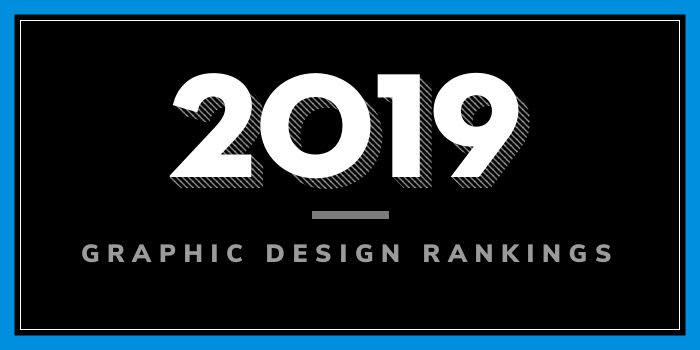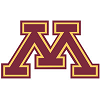
| Ranking | School | City |
|---|---|---|
| 1 | Minneapolis College of Art and Design | Minneapolis |
| 2 | University of Minnesota – Duluth | Duluth |
| 3 | University of Minnesota | Minneapolis |
Our 2019 rankings of the top graphic design school programs in Minnesota. For an explanation of the ranking criteria, click here.
 1. Minneapolis College of Art and Design, Minneapolis, Minnesota
1. Minneapolis College of Art and Design, Minneapolis, Minnesota
Minneapolis College of Art and Design (MCAD) was established in 1886. The school serves 800 students enrolled in Design (50% of the student body), Media Arts (38%), 10% in Fine Arts, and the remaining 2% in MCAD’s new Arts Entrepreneurship Department. More than 20 programs are available across several departments, including a BFA in Graphic Design, Post-Baccalaureate Certificates in Graphic Design and Interactive Design and Marketing, and an MFA in Visual Studies. A 30 credit hour MA in Graphic and Web Design (online) is also available.
Per the school, students in the 120 credit hour BFA program will develop their own voice and produce original work, they will Research, engage with, and create innovative concepts, content, and form, and learn to communicate ideas visually. Students will also refine their technical and conceptual design skills in preparation for a professional career in graphic design.
The 60 credit hour MFA program allow students to pursue creative work in Graphic Design, Illustration, Interactive Media, Paper and Book Arts, Printmaking, and many others. Students in all graphic design programs have the opportunity to gain practical, real-world experience through a required internship. The option to study abroad or elsewhere in the U.S. is also highlighted.
 2. University of Minnesota – Duluth, Minnesota
2. University of Minnesota – Duluth, Minnesota
Established in 1895, as the Normal School at Duluth, University of Minnesota – Duluth (UMD) serves 11,040 students enrolled in 15 bachelor degrees in 83 majors and 70 minors as well as five certificates. UMD also offers graduate programs in 26 fields, 13 minors, and five certificates. Programs are offered through eight colleges and schools, including the School of Fine Arts, which houses the Department of Art & Design. Here, students can earn a BFA in Graphic Design with two emphasis options including Studio Art and Marketing.
The BFA in Graphic Design/Studio Art consists of design topics from Typography and Brand Identity to Motion Graphics and Interactive Design as well as studio coursework such as 3D Digital Studio, Digital Arts: Time-Based Media, Digital Arts: Interactive Media, and Digital Studio: Mixed Media Studio. Per the school, “Additional upper-level design courses in the major enable students to graduate with an impressive professional portfolio and solid interview training aimed to launch a successful career and stay active in the future of design.”
The BFA in Graphic Design/Marketing is a “collaborative professional degree between the School of Fine Arts and the Labovitz School of Business and Economics that combines graphic design coursework with an array of marketing courses to provide a strong, integrated and broad-range professional skill-set.” Sample marketing courses include Advertising and Marketing Communications, Consumer Behavior, Fundamentals of Selling, International Marketing, Marketing Research, and Social Media Marketing. A Marketing Internship is also part of the program. Just 30 students are admitted to this major each year through portfolio review.
 3. University of Minnesota - Twin Cities, Minneapolis, Minnesota
3. University of Minnesota - Twin Cities, Minneapolis, Minnesota
University of Minnesota - Twin Cities (U of M) is the state’s land-grant university. The school serves 31,353 undergraduate students and 16,033 graduate and professional students through more than a dozen colleges and schools. The College of Design offers a BFA in Graphic Design that requires 120 credit hours to graduate. Eighty to 89 credits are required in the major.
Per the school, “The graphic design program educates students in design thinking, user-centered design methods, design theory, creative problem solving, and visual and verbal literacy. An emphasis is placed on visual components: how humans communicate, perceive, interpret, and understand visual information. The program fosters flexibility, which enables graduates to adapt to social, cultural, and technological change in graphic design. The program's foundation is broadly based. Students begin with courses in fundamental aspects of visual studies. Upper division courses prepare them for graphic design positions in print and electronic media.”
Sample courses for the program include Advanced Typography, Color and Design in Two and Three Dimensions, Data Visualization Studio, Design and Visual Presentation, Introduction to Design Thinking, Packaging and Display, Text and Image, and Web Design. Students also have the opportunity to choose between Public Speaking or Storytelling and Design, as well as unique electives such as Concept Sketching, Evidence-Based Design, Fundamentals of Game Design, Human Factors in Design, Phenomenon of Everyday Design, and Toy Product Design.
An internship of 1-3 credits is also part of the program.

